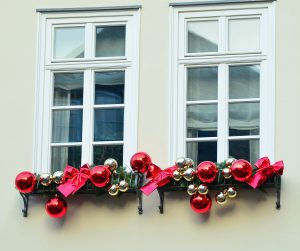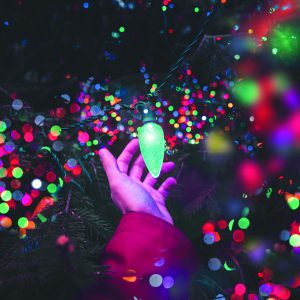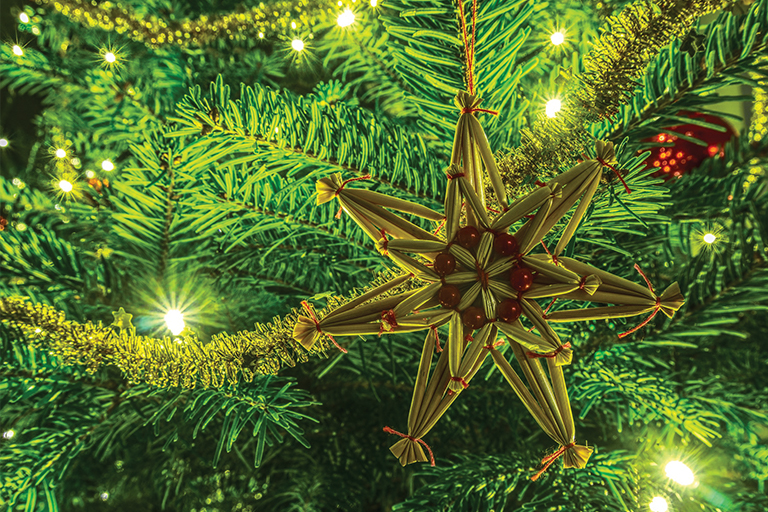By Pat Keegan and Brad Thiessen
It’s a shame that holiday lighting can lead to higher energy bills, but the good news is there are strategies that can save you money without dampening your holiday spirit.
One of the best ways to save energy is LED lights, which use about 80 percent less energy than incandescent bulbs. The amount of money you save depends on a lot of factors, including your electric rate and how many hours your holiday lights are turned on.

You may be able to simplify your outdoor decorations to save energy and still have a dramatic effect.
We’ve seen a number of savings estimates in energy costs. One report said that replacing five strings of traditional incandescent outdoor lights with LED bulbs could lower your bill from about $14 to 22 cents. Another report said that replacing incandescent lights on a typical indoor tree with LED bulbs could lower your monthly cost from $15 to $2.
The reason incandescent bulbs are so inefficient is that at least 90 percent of their energy is converted into heat, not light. LEDs, by contrast, convert virtually all their energy to light. This means up to 20 strings of LED lights can be linked together, whereas incandescent sets are typically limited to between three and five strings in a chain. The efficiency of LED lights also makes them safer because they generate so much less heat.
Aside from their energy efficiency, LED lights can last longer—around 200,000 hours or more, which is about 25 times longer than incandescent lights. The bulb is more durable because it is made of an epoxy instead of glass.

LED bulbs come in a variety of shapes and sizes. They are made with epoxy instead of glass, making them much stronger than incandescent bulbs. And they are cooler to the touch. Photo Credit: Max Bender (Unsplash.com user/contributor)
But not all LEDs are created equal. An LED that is not designed properly can flicker, change color or draw power even when it’s turned off. To avoid these problems, purchase ENERGY STAR®-rated LEDs. To qualify for the ENERGY STAR® rating, LED products must use 75 percent less energy than incandescent lighting and pass a number of additional tests.
The drawback of switching over to LED lights is the upfront cost. Incandescent bulbs can be purchased for 19 to 50 cents each, while a replacement LED will likely cost $1 or more. But one estimate we ran across showed the estimated cost of buying and operating standard C-9 lights for 10 seasons is $122 for incandescent bulbs and $18 for LEDs. Plus, the LED lighting is more likely to last the full 10 seasons, meaning fewer trips to the store.
There are other ways to cut energy expenses. You can use decorative solar light sets, which store energy during the day and release light during the night. Timers are also a good idea because they can reduce energy use, especially if you don’t always remember to turn the lights off before bedtime.
Innovative decorating ideas can make your display more dynamic and interesting, which might help you get by with fewer lights. Here are some ideas that can reduce energy costs while keeping your holidays bright:
• Color-changing LED lights can cycle through the colors in sequence and can even be set to change colors in response to music.
• A laser light projector sits on the ground or other flat surface and projects multi-colored patterns onto the wall of your house. Most include a timer function and may come with a remote control and additional features. They come in a range of prices from $20 up to $150 or more.
• You can recreate the excitement of a laser light show (using LED lights) by installing a smart lighting system that creates pre-set or programmable light shows through your smartphone or other smart devices.
• For maximum effect with the smallest amount of energy use, try distributing the lighting across a broader space. In the spaces between light, add reflective ornaments and decorations to increase the effect of the lights and add interest.
Hopefully these tips help raise your holiday spirits without giving you the budget blues in January.
This column was co-written by Pat Keegan and Brad Thiessen of Collaborative Efficiency.

